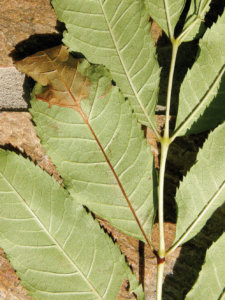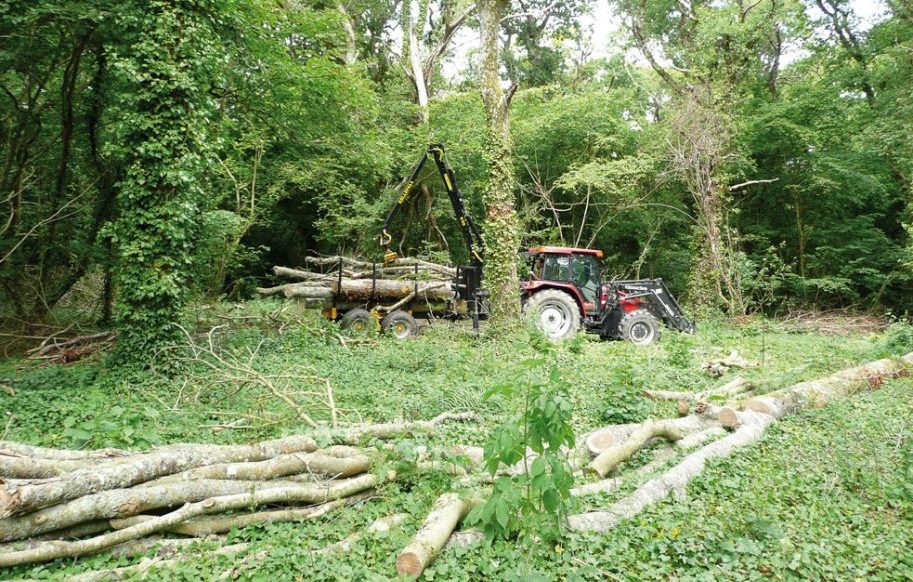 I can just about remember the grand old skeletons of the English elms, standing proud on our landscape.
I can just about remember the grand old skeletons of the English elms, standing proud on our landscape.
As a nine year old, we had one taken down in our garden, because it became unsafe. I made a tree house, from an upturned table nailed crudely onto the raised stump. Dutch elm disease tore through the Islands countryside like a storm, sparing no elm tree in its path.
Ash trees are more prolific, but Chalara dieback of ash (Chalara fraxinea) has the potential to do something similar, possibly much worse, to our ash tree population.
The ash is a fairly abundant, native broadleaf tree. There are around 130,000 hectares of predominantly ash woodland in Great Britain with an estimated 12 million more trees growing outside woodlands and forests. It can reach heights of 40 metres, growing for over 150 years.
It prefers moist, well drained and fertile soil, but also survives well near smoke and pollution, so is a good urban dweller. It can be grown as a ‘coppice’, meaning the trunks and branches can be regularly cut, with new stems re-growing and is a sort-after fuel for log fires and wood burning stoves. The auld woodsman saying; ‘dry or green, fit for a queen’, refers to ash firewood!
Ash is not only admired by us humans, but has high conservation value as well. Some 41 species of insects and over 250 species of lichens are found on ash trees. This has a positive knock-on effect and supports many other types of wildlife, including birds, mammals and spiders.
Along with its importance for firewood, the timber is also highly regarded. It is one of the toughest, being a natural shock absorber. The wood can take a hard blow without splintering, and so, is used where strength and flexibility are needed. Today you will find it as handles for tools and sports goods; hammers, axes, spades, hockey sticks and oars to name a few. The attractive grain, the strength and the ease which it can be bent means that Ash is still used widely for furniture. Traditional uses include skis, tent pegs and horse drawn carts.
Trees suffering from Chalara dieback have been found widely in Europe for some years. Reported cases of large numbers of ash dying in Poland in 1992 have now been attributed to the Chalara pathogen. This currently being the earliest identified, site of infection.
The disease is indiscriminate of age and habitat, as, Chalara has been found in forest trees, urban areas such as parks and gardens and young stock in nurseries. It spread rapidly to other European countries, but it wasn’t until 2006 before the fungus was first identified by scientists and another four years before its reproductive properties were acknowledged.
 It was initially suspected that the disease was brought to our shores via infected plants from European nurseries. However, now that it has been found in older trees along the east coast of England, with no apparent connection to plants supplied by nurseries, the possibility of it arriving by natural means are being investigated. These ‘natural causes’ include being carried on the wind or birds coming across the North Sea, or on items such as footwear, clothing or vehicles of people who had been in infected sites.
It was initially suspected that the disease was brought to our shores via infected plants from European nurseries. However, now that it has been found in older trees along the east coast of England, with no apparent connection to plants supplied by nurseries, the possibility of it arriving by natural means are being investigated. These ‘natural causes’ include being carried on the wind or birds coming across the North Sea, or on items such as footwear, clothing or vehicles of people who had been in infected sites.
So, what is the future for our ash tree? The Government has currently placed a blanket ban on all movements of any type of ash tree. Where the disease has been identified in young stock, the owners are being asked to destroy the infected plants to prevent the disease spreading.
The Forestry Commission is asking for your help in reporting ash trees with the Chalara dieback symptoms. Take care to first make sure that the infected tree is really an ash (look for the black buds) because they can look similar to the rowan tree, which does not get the disease.
Check out the Forestry Commissions website showing how to identify Chalara, www.forestry.gov.uk/chalara. If you think you have spotted the disease, please check the symptoms video and pictorial guide to symptoms before reporting it.
Chalara helpline: 08459 335577 (open 8am – 6pm every day) or plant.health@forestry.gsi.gov.uk. You should also follow the ‘biosecurity’ advice, to avoid accidentally spreading the disease on your boots, clothes, bicycle wheels etc.



